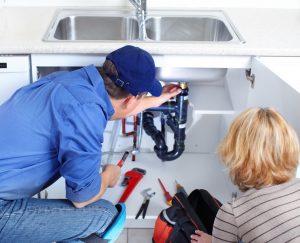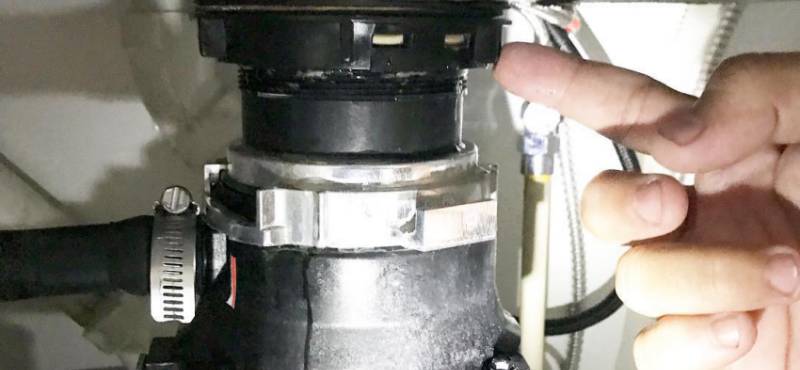Swift Solutions for Fixing a Dripping Waste Disposal Unit
Swift Solutions for Fixing a Dripping Waste Disposal Unit
Blog Article
Just about everyone has their personal piece of advice in relation to Why Is My Garbage Disposal Leaking From the Bottom?.

Garbage disposals are crucial kitchen devices that assist in disposing of food waste efficiently. Nonetheless, a dripping garbage disposal can be a frustrating and untidy issue to take care of. Luckily, several leaks can be repaired easily with a few easy steps. In this article, we will certainly go over exactly how to deal with a dripping waste disposal unit efficiently.
Introduction
Waste disposal unit are mounted under kitchen sinks and are designed to shred food waste right into smaller sized items, permitting it to go through the plumbing system easily. While these tools are typically trusted, leaks can take place over time as a result of damage, loosened connections, or damage to the device.
Step-by-Step Overview to Dealing With a Leaking Garbage Disposal
Switch off the Power
Prior to trying any type of fixings, make certain that the power to the waste disposal unit system is switched off to avoid the threat of electrical shock.
Situate the Leak
Identify the specific location of the leakage and figure out the cause
Tighten up Links
Utilize a wrench to tighten up any type of loosened connections in between the disposal system and the pipes system.
Replace Seals or Gaskets
If the leakage results from used seals or gaskets, remove the old elements and replace them with brand-new ones.
Patching Fractures or Openings
For fractures or openings in the disposal device, usage epoxy or a suitable patching material to secure the damaged area.
Determining the Resource of the Leakage
Before trying to fix a dripping waste disposal unit, it is necessary to identify the source of the leak. This can normally be done with visual inspection or by performing easy tests.
Visual Inspection
Inspect the garbage disposal device thoroughly for any kind of signs of water leak. Pay very close attention to areas around seals, gaskets, and connection points.
Evaluating for Leaks
One way to examine for leakages is by running water through the disposal unit and looking for any type of visible indications of leak.
Typical Reasons For Leaks in Garbage Disposals
Worn Seals and Gaskets
Seals and gaskets play a crucial duty in stopping water from dripping out of the garbage disposal. With time, these elements can weaken, leading to leakages around the disposal system.
Loose Connections
The links in between the waste disposal unit and the plumbing system can end up being loose with time, triggering water to leak out during procedure.
Cracks or Holes in the Disposal Device
Physical damages to the waste disposal unit, such as splits or holes in the housing, can likewise cause leaks.
Tools and Materials Needed for Taking Care Of a Leaking Garbage Disposal
Before beginning the fixing process, collect the required devices and materials, consisting of a screwdriver, adjustable wrench, plumbing's putty, replacement seals or gaskets, and epoxy or patching material for fixing fractures or openings.
Testing the Waste Disposal Unit After Repair Service
As soon as the repair is full, evaluate the garbage disposal by running water with it to make sure that the leak has been dealt with.
Preventive Upkeep Tips to Prevent Future Leaks
To prevent future leaks, it is important to carry out normal maintenance on your waste disposal unit. This includes keeping it clean, staying clear of placing non-food items or difficult things down the disposal, and periodically checking for leaks or other concerns.
Final thought
In conclusion, taking care of a leaking waste disposal unit is a reasonably straightforward process that can be completed with basic tools and materials. By following the steps described in this post and practicing precautionary maintenance, you can keep your waste disposal unit in good working condition and prevent expensive fixings in the future.
What to Do About a Leaking Garbage Disposal
A leaking garbage disposal often goes unnoticed until you confront a sopping cabinet, a foul-smelling puddle, or an audible drip-drip-drip from the unit. The fix can be frustrating, too, because the leak can stem from a number of components in the system. Fortunately, with a little sleuthing, you can zero in on the leak and—depending on the exact location—stop the icky oozing and repair the component that caused it. Worst case scenario, if it turns out that the garbage disposal must be replaced, installing a new one is a reasonable do-it-yourself task for those with basic plumbing skills. Read on to keep the cash you’d otherwise hand over to a pro.
Prepare to find the leak
Prior to testing the garbage disposal for leaks, unplug it at the wall outlet and turn off the power from the breaker box to prevent electrical shock. Then insert a watertight sink stopper into your sink drain and wipe the unit dry with a clean cloth. In any handy container, mix a few drops of food coloring into a few cups of water, and pour the dyed water onto the sink stopper to help you locate the leak.
Investigate the source
the top, where the disposal meets the sink drain the side, where the dishwasher hose or main drain pipe connects to the disposal or the bottom of the unit Inspect each of these locations while gliding a light-colored rag over the unit; the dyed water will readily show on the rag and reveal the location of the leak. If a leak isn’t immediately apparent, remove the sink stopper and pour a few more cups of dyed water down the sink drain, then check for leaks again. Leaks near the top of the unit are more likely to show themselves while the sink is plugged, while side and bottom leaks are more noticeable while the sink is unplugged.
The metal sink flange that sits directly inside the sink drain is typically sealed around the top with plumber’s putty (a clay-like sealant) and then secured from under the sink with bolts. If the plumber’s putty deteriorates, or the bolts loosen, the flange can no longer form a watertight seal between the sink drain and the disposal—which could cause a leak at the top of the unit.
To reseal the leaky flange, you must first detach the garbage disposal. Start by loosening the screws securing the main drain pipe to the disposal, then loosen the screws in the metal clamp securing the dishwasher hose to the disposal and detach the drain pipe and dishwasher hose from the disposal. Loosen the screws in the mounting ring that connects the disposal to the metal mounting assembly beneath the sink, then pull down the disposal and carefully set it on a clean, dry surface. Loosen the bolts in the mounting assembly with a wrench, then pull down the mounting assembly and set it near the disposal.

I hope you enjoyed reading our section on Why Is . Thanks a ton for spending some time to read through our piece of content. Feel free to set aside a second to share this post if you appreciated it. Many thanks for taking the time to read it.
Schedule And Pricing Report this page